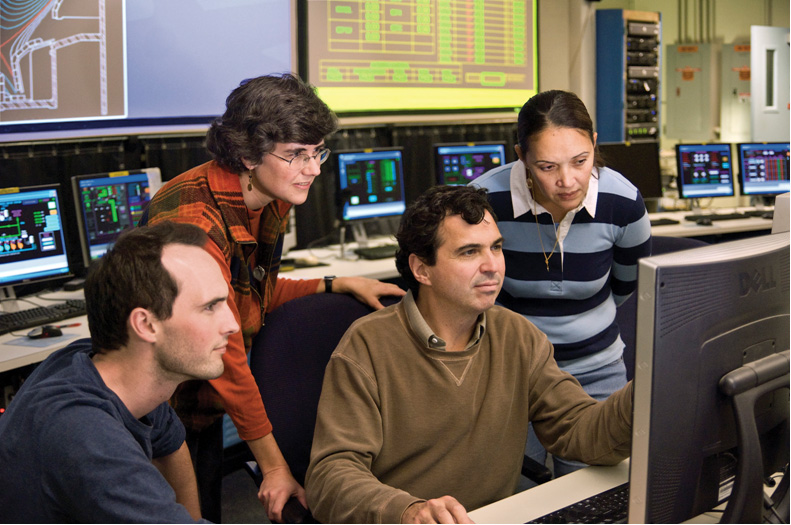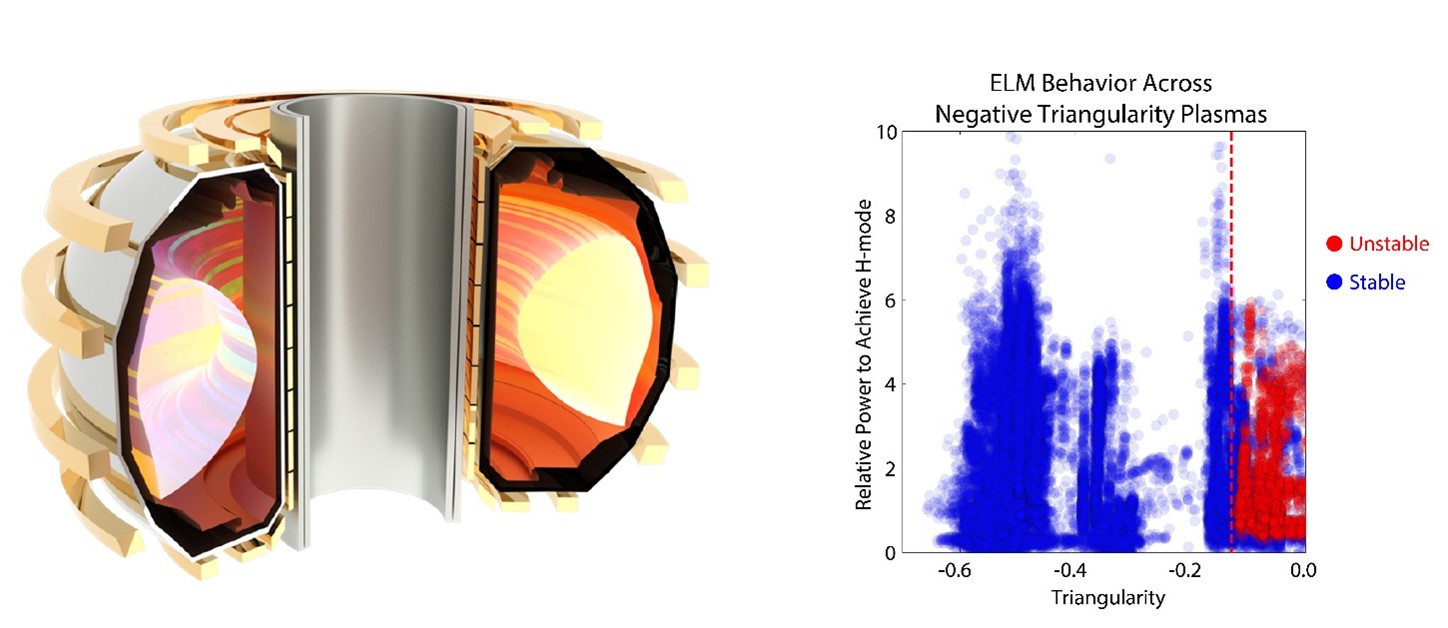Better Fusion Plasma Operating Scenarios are Being Explored and Extended on the Alcator C-Mod Tokamak
Recent experiments on Alcator C-Mod have investigated an improved confinement regime, called “I-Mode”, expanding its operational range and pointing toward its applicability on future devices.

The Science
I-Mode combines excellent energy confinement with favorable particle and impurity transport, and without large edge instabilities. The ability to separate turbulence-driven energy and particle transport provides a new research path into this complex topic.
The Impact
I-mode may offer a solution to a long-standing challenge for magnetic fusion energy. Standard high-performance tokamak plasmas typically have both energy and particle transport barriers at the edge, in many cases leading either to impurity accumulation in the core plasma or to potentially deleterious edge localized mode (ELM) instabilities. The I-Mode has the promise of providing an operating space with improved energy confinement, but no change to particle transport. This keeps impurities from building up and limits the triggering of ELMs. Estimates of I-mode extrapolation to ITER indicate that this may be a very attractive alternate to the conventional H-mode for reaching the Q=10 burning plasma target on ITER. Recent C-Mod results have demonstrated that I-mode can be accessed at relatively low plasma density, and then maintained as both density and power to the plasma are increased, as is expected to be the approach on ITER.
Summary
I-Mode is an attractive tokamak operational regime, combining the high energy confinement and edge thermal barrier of H-mode, with the low particle confinement of L-mode, avoiding impurity accumulation and the need for ELMs to expel particles; ELM divertor heat fluxes are an issue of great concern for ITER. Alcator C-Mod experiments have confirmed and extended prior results which found particularly robust operation in this configuration, maintaining I-mode up to the highest ICRF heating powers on C-Mod, expanding the ranges of magnetic field, and obtaining detailed information on the core and edge profiles and turbulence which should help us understand better its physical mechanisms. Initial assessments of the potential application of I-mode to ITER were positive, indicating that I-mode may be accessible on ITER with the planned heating power, at average density of about 5 x 1019m-3, and that Q=10 could be achievable at about 30% higher density. An open issue was whether such a controlled density increase was achievable while maintaining the I-mode. This motivated recent C-Mod experiments to assess density dependences and implement active density control. Results were extremely positive. Gas fuelling was added to an I-mode phase, increasing average density from the initial 1.5 x 1020m-3, to a final value of 2 x 1020m-3. Plasma pressure remained nearly constant, with energy confinement following the ITER H-mode scaling, while I-mode turbulence features and edge temperature pedestal are clearly maintained. With further increases in power, from external sources, or from alphas in a burning plasma, it could well be possible to extend the I-mode operating space to even higher densities and performance. Additional experiments, both on C-Mod, and in coordination with larger, lower field tokamaks, are urgently required to increase our confidence in the extrapolations to burning plasma conditions on ITER.
Contact
Amanda Hubbard
MIT
hubbard@psfc.mit.edu
Dennis Whyte
MIT
whyte@psfc.mit.edu
Funding
DOE Office of Science, Fusion Energy Sciences (FES) program
Publications
D.G. Whyte, et al., Nuclear Fusion 50 105005 (2010).;
A.E. Hubbard, et al., Physics of Plasmas 18 056115 (2011);
N.T. Howard, et al., Rev. Sci. Instrum. 82 033512 (2011);
J.E. Rice, et al., Phys. Rev. Lett. 106 215001 (2011);
A.E. Hubbard, et al., Nucl. Fusion 52 114009 (2012);
Arturo Dominguez, MIT PhD Thesis (2012) and submitted to Nuclear Fusion;
A.E. Hubbard, et al., 24th IAEA FEC (2012), San Diego, CA, paper EX1/3, to be submitted to Nuclear Fusion
Related Links
http://www.psfc.mit.edu/research/alcator/
Highlight Categories
Program: FES
Performer: SC User Facilities , FES User Facilities , C-Mod



